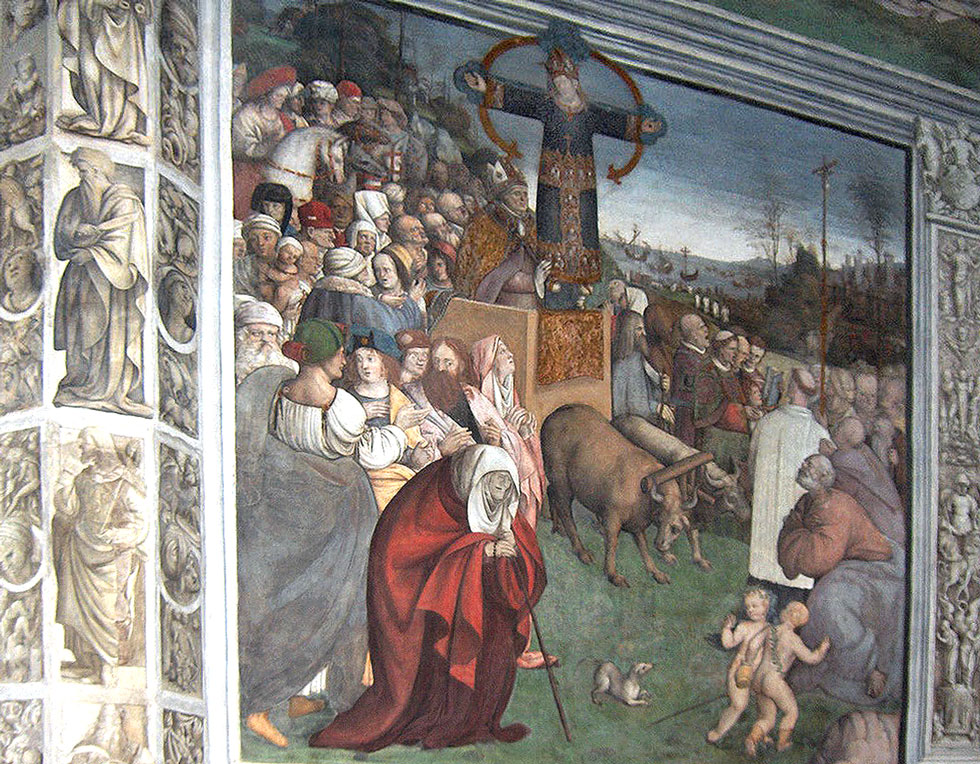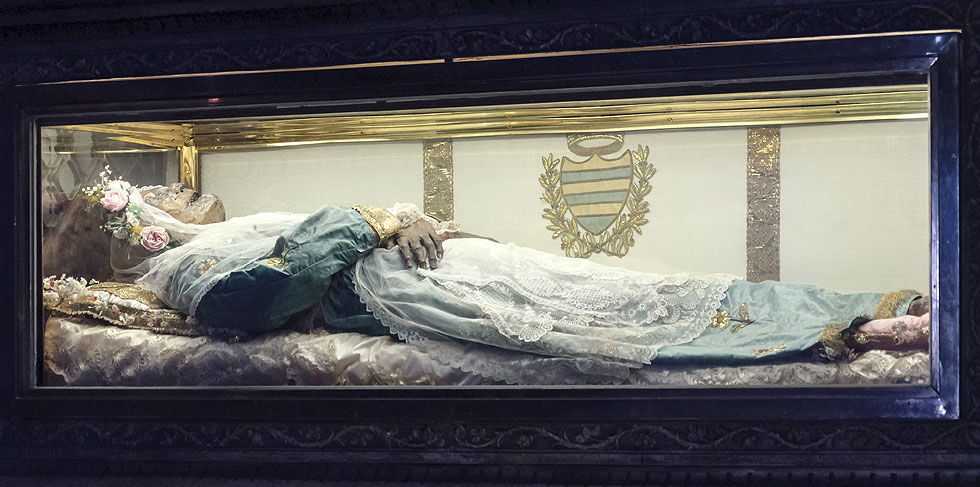A month ago I posted an item about a crucifix known as the Holy Face of Lucca, explaining its connection to Botticelli’s Primavera. I also mentioned there were more links to Lucca in the painting.

When the Holy Face arrived in Lucca, it was first placed in the church of San Frediano before its translation to the church of San Martino, now referred to as Lucca Cathedral, where it has remained ever since.
On one of the walls in San Frediano is a fresco showing the transportation of the Holy face to Lucca after it had drifted on a boat to the Tuscan port of Luni from Palestine.

Also in the the church of San Frediano lies the body of St Zita. She was a domestic who served a Lucchese family of silk merchants for 48 years. Zita was noted for her piety and aiding poor women of Lucca. After Zita died in 1272 many miracles became associated with her, and 300 years after her death, at the age of 60, her body was exhumed and found to be incorrupt. Zita was canonised in 1696.

A story associated with Zita is when she set off one day carrying bread in her cloak to feed the poor. Some jealous servants complained to her master, suggesting she was stealing the bread. When the master of the Fatinelli household confronted Zita and ordered to open her cloak, it was found to be full of flowers.
It is this account that Botticelli has linked to the figure of Flora in the Primavera, seen distributing flowers from her apron. The figure of Flora also represents Simonetta Vespucci, referred to as La Sans Pareille – The Unparalleled One – on an banner image of her painted by Botticelli which Giuliano de’ Medici carried in a jousting tournament he took part in 1475.

By integrating Simonetta and St Zita with the figure of Flora, Botticelli has created a link to the Greek philosopher Plutarch and his book Parallel Lives, a series of biographies of famous Greeks and Romans “arranged in pairs to illuminate their common moral virtues or failings”.
So now the upright Simonetta-cum-Flora can be compared to the leaning or falling figure of Chloris in the guise of Fioretta Gorini. Likewise, the virtues of Flora as Zita can be compared to the failings and later conversion or change in the circumstances of Fioretta when she became an anchoress, symbolised as being grafted to Flora.

Chloris is the Greek goddess of flowers; Flora is her Roman equivalent. The Roman poet Ovid wrote in Fasti 5: “The goddess replied to my questions; as she talks her lips breathe Spring roses: ‘I was Chloris, who am now called Flora’”. Hence the roses depicted rambling from the mouth of Chloris and her attachment to the figure of Flora.
This transformation from Greek to Roman is also reflected in the life of Plutarch, a Greek who became a Roman citizen.
But Simonetta wasn’t always as upright as portrayed in this scene in Primavera. In an earlier painting by Botticelli – The Birth of Venus – Simonetta is depicted standing off-kilter on a giant scallop, having being blown by the wind to arrive in Florence from the region of Liguria in northwest Italy, which is close to the Port of Luni where the Holy a Face of Lucca sailed into from Palestine.

So why is Simonetta portrayed as both leaning and upright in Botticelli’s two different paintings? Clues to the answer are to be found in the Primavera, one of which is a further link to Lucca Cathedral and introduces another artist Botticelli referenced for composing his painting.
More on this in a future post.

You must be logged in to post a comment.